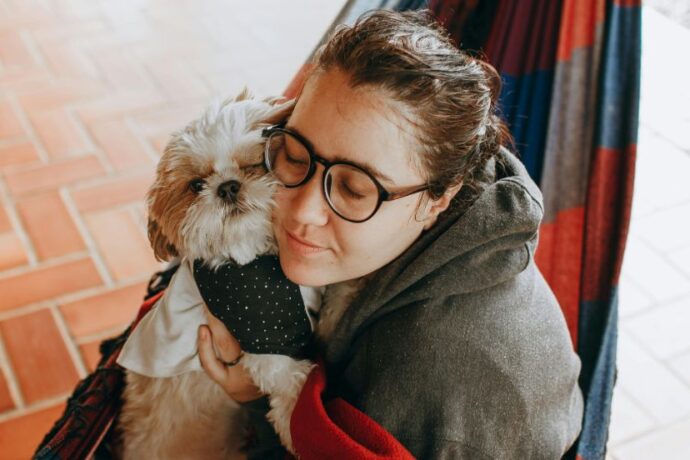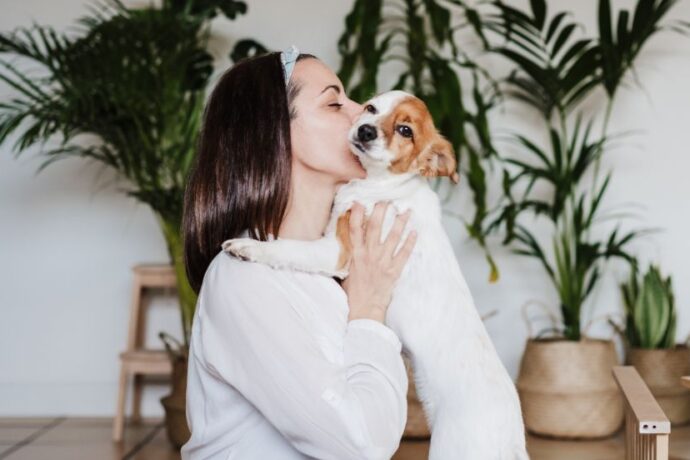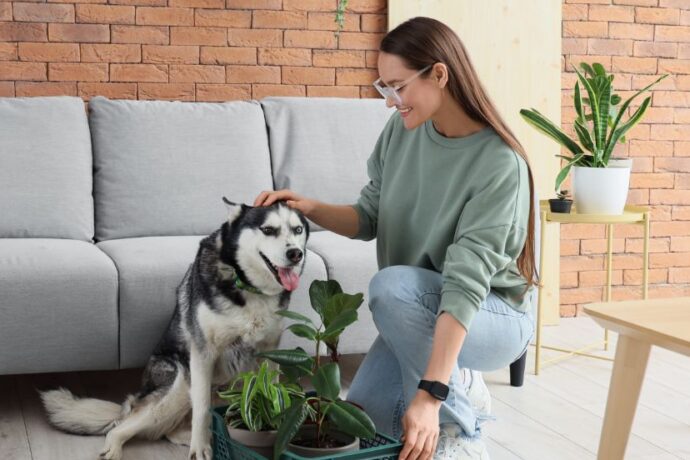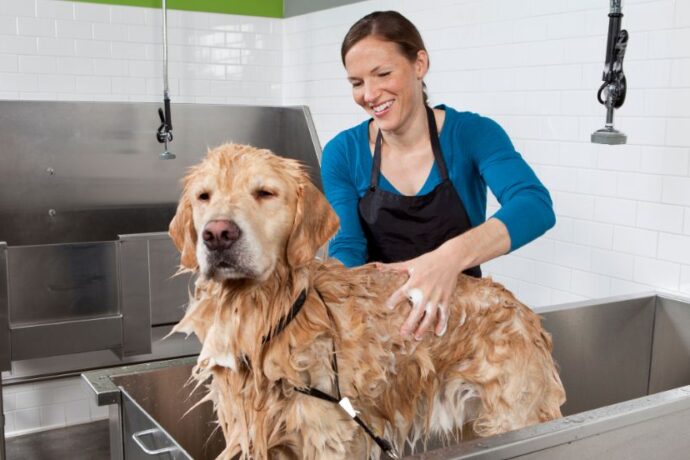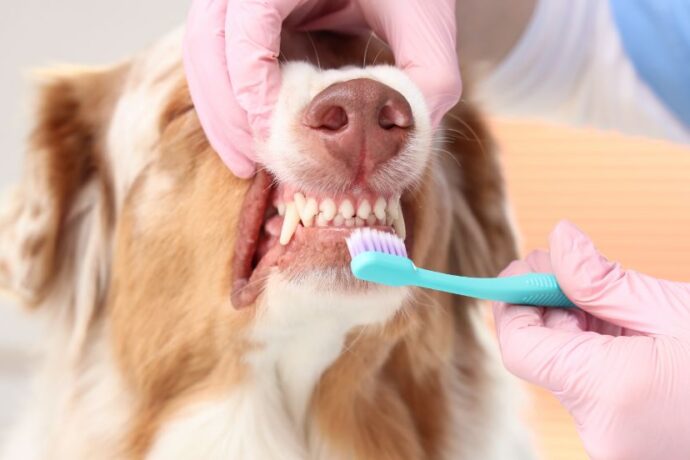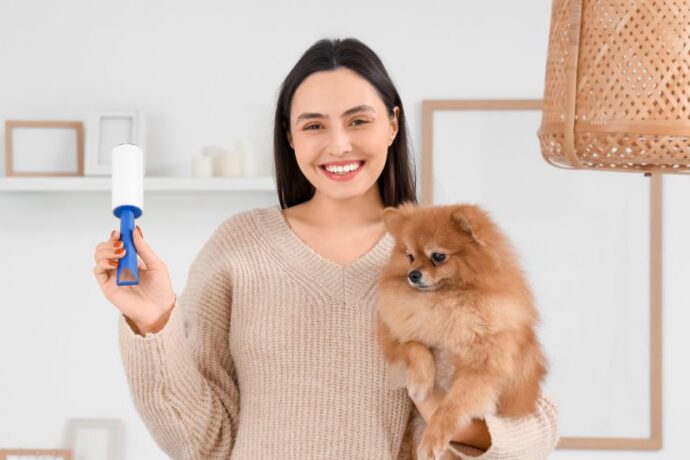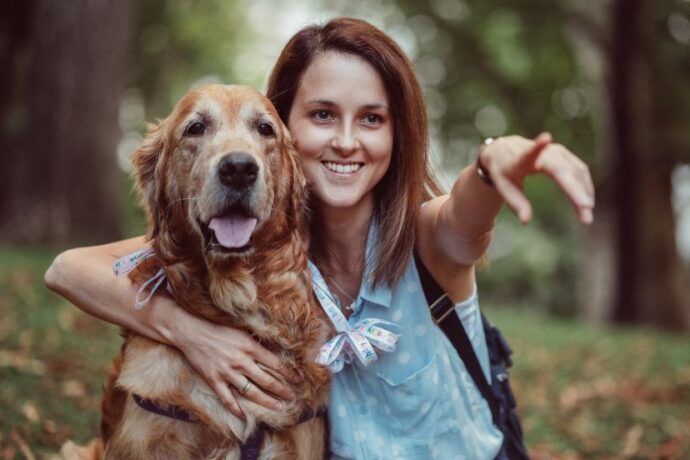If you’ve ever come home to chewed-up shoes, scratched doors, or endless howling, you might be dealing with a dog suffering from separation anxiety. This common behavioral issue occurs when a dog becomes excessively distressed upon being left alone or separated from their owner. It’s not just “bad behavior”—it’s a genuine emotional struggle.
According to the American Veterinary Medical Association (AVMA), separation anxiety affects nearly 20% of dogs, making it one of the most frequently diagnosed behavioral issues in canines (1)(2). Dogs are naturally social animals; they thrive on companionship and routine. When that connection is disrupted—such as when owners leave for work or travel—some dogs experience panic, fear, and confusion.
Let’s explore what separation anxiety really means, how to identify it, and, most importantly, how you can help your dog feel safe and secure even when you’re not around.
The Emotional Reality: What Separation Anxiety Really Is
Separation anxiety is more than just your dog missing you—it’s a full-blown stress response. When a dog with this condition is left alone, their brain releases stress hormones like cortisol and adrenaline, similar to a human panic attack.
Common signs include:
- Excessive barking, whining, or howling when left alone
- Destructive behaviors (chewing, digging, scratching doors or windows)
- Pacing or restlessness
- Attempts to escape or follow the owner out the door
- Accidents indoors despite being house-trained
Scientific understanding: A study published in Applied Animal Behavior Science (2020) found that dogs with separation anxiety show elevated cortisol levels and heart rates during owner absence (3). The study also noted that the presence of comforting cues—like familiar scents or background sounds—can significantly reduce stress indicators.
Recognizing these symptoms early can prevent the condition from worsening. Early intervention, paired with consistency and patience, can make a world of difference in helping your dog regain confidence.
Calming the Chaos: How to Help a Dog With Separation Anxiety
Helping a dog overcome separation anxiety requires a balance of behavioral training, environmental support, and emotional reassurance. Below are proven, expert-recommended strategies to ease your dog’s anxiety.
1. Start with Gradual Desensitization
Don’t go from being home all day to leaving suddenly for hours. Begin with short separations, like stepping out for a few minutes, and slowly increase the duration. Pair these moments with positive reinforcement—treats, toys, or soothing praise—to help your dog associate your absence with calmness, not fear.
2. Create a Comfort Zone
Set up a safe, quiet area where your dog feels secure. Use a cozy bed, their favorite toys, and an item with your scent (like a worn T-shirt). Studies have shown that dogs are calmed by their owner’s scent, which activates the olfactory memory centers linked to comfort and attachment.
3. Provide Mental and Physical Stimulation
A tired dog is a happy dog. Regular walks, play sessions, and puzzle toys can reduce pent-up energy that fuels anxiety. Interactive toys like treat-dispensing balls or snuffle mats keep them occupied and mentally stimulated when you’re away.
4. Establish a Predictable Routine
Dogs thrive on consistency. Feeding, walking, and playtime at regular intervals create structure and reduce uncertainty. The American Kennel Club (AKC) recommends maintaining a daily schedule to minimize anxiety triggers linked to unpredictability.
5. Use Calming Aids Wisely
Some dogs benefit from natural or vet-approved calming aids. Options include:
- Adaptil diffusers or collars, which release synthetic dog-appeasing pheromones
- L-theanine or CBD supplements, under veterinary guidance
- Classical or soft background music, which studies suggest helps reduce stress-induced vocalization
6. Positive Reinforcement Training
Never punish anxious behavior—it only heightens fear. Instead, reward calm behavior and independence. For example, if your dog stays relaxed while you prepare to leave, offer a small treat before walking out the door.
7. Consider Professional Help
If symptoms persist, consult a certified canine behaviorist or veterinarian. Severe cases may require a combination of behavior modification therapy and medication to rebalance brain chemistry. Vets may prescribe anti-anxiety medications like fluoxetine or clomipramine, used safely under supervision to reduce panic responses.
Hope and Healing: Can Separation Anxiety Be Cured?
The good news? Yes, separation anxiety can be managed—and often fully resolved—with time, consistency, and compassion. Like humans with anxiety disorders, dogs respond best to gradual exposure therapy and a secure environment.
Research published in Frontiers in Veterinary Science (2022) highlights that most dogs show significant improvement within 8 to 12 weeks of consistent behavioral training (4). The key is patience—forcing independence too quickly can backfire.
It’s also important to recognize that each dog is different. Some may improve quickly with routine changes, while others may require professional guidance or long-term management. The goal is progress, not perfection.
Backed by Science: Why These Methods Work
Behavioral scientists emphasize that dogs form strong attachment bonds similar to those seen in young children. According to the University of Lincoln’s Animal Behavior Clinic, dogs perceive their owners as a “secure base,” which helps them explore and interact confidently (5). When this base disappears abruptly, anxiety sets in.
By replicating security cues (routine, scent, sound), owners help stabilize the dog’s nervous system and reduce cortisol spikes. Consistent positive reinforcement encourages the brain to rewire its response to separation—from panic to calm acceptance.
These scientifically supported methods don’t just mask symptoms—they retrain the emotional patterns behind the anxiety.
FAQ’s Frequently Asked Quetions
1. How long does it take to treat separation anxiety in dogs?
A. Most dogs begin showing progress within a few weeks of consistent training, but complete recovery can take a few months. Mild cases respond faster, while severe anxiety may need long-term support or medication.
2. Will getting another dog help with my dog’s separation anxiety?
A. Not always. Some dogs are anxious because of attachment to you, not loneliness in general. Adding another pet may not solve the root issue and can sometimes introduce new challenges.
3. Can older dogs develop separation anxiety?
A. Yes. Changes in routine, household dynamics, or health (like hearing loss or cognitive decline) can trigger anxiety even in senior dogs. In such cases, veterinary assessment is especially important.
The Bottom Line: Patience, Love, and Consistency Win
Helping a dog overcome separation anxiety isn’t about quick fixes—it’s about rebuilding trust and emotional security. By using calm, science-backed methods and showing consistent reassurance, you can teach your furry friend that being alone isn’t scary—it’s just another part of a normal, happy life.
Remember, every dog deserves to feel safe, even when you’re not there. With the right approach and plenty of love, separation anxiety can transform from a daily struggle into a story of resilience and healing.
References:
1. Review of epidemiological, pathological, genetic, and epigenetic factors
2. Canine separation anxiety
3. The effect of time left alone at home on dog welfare
4. How Dogs Perceive Humans and How Humans Should Treat Their Pet Dogs


